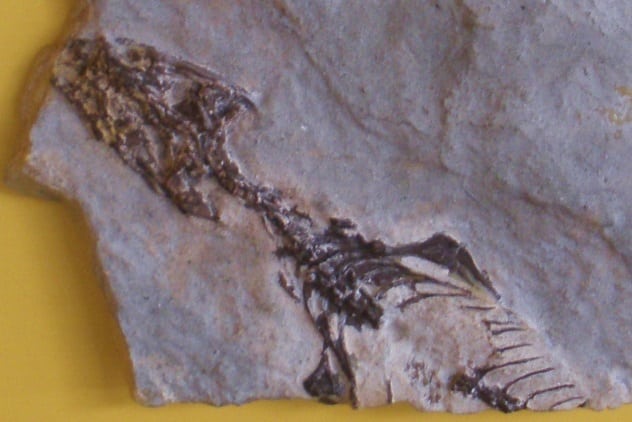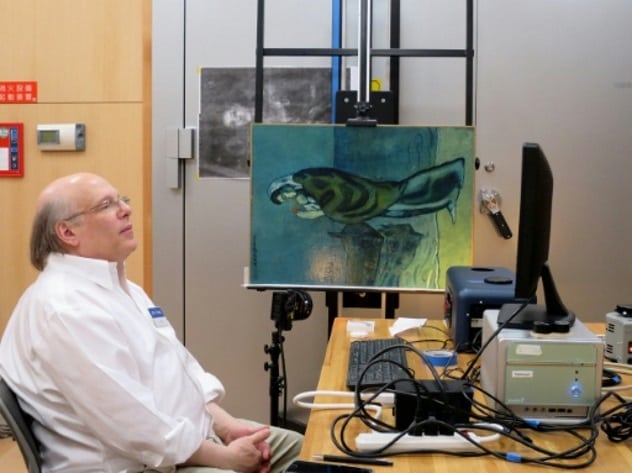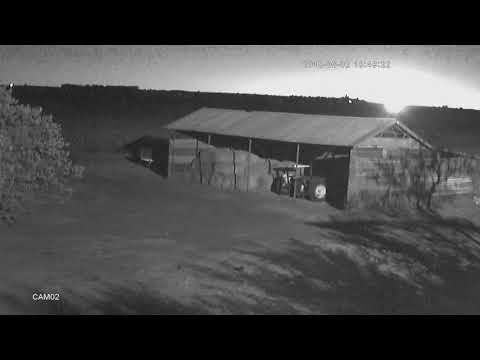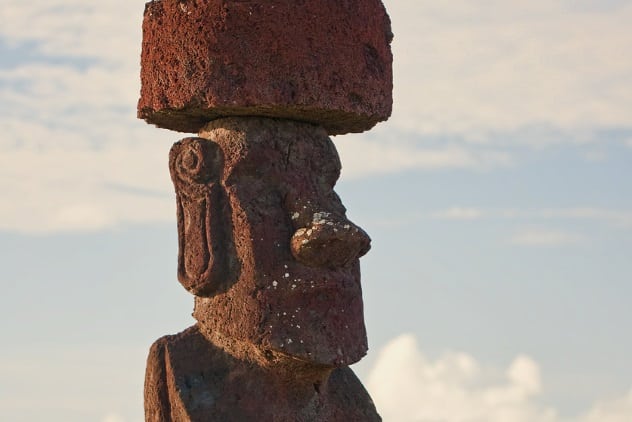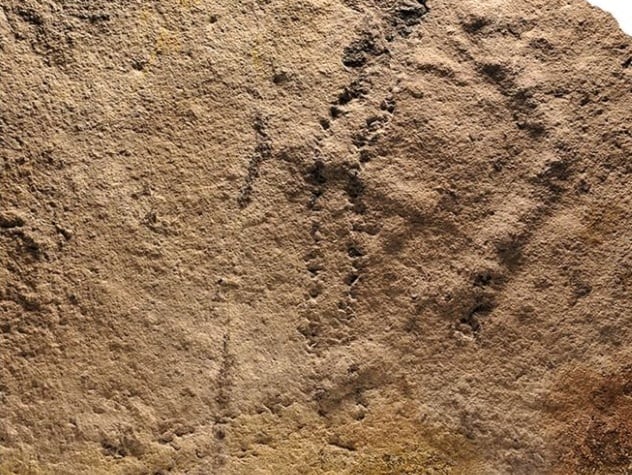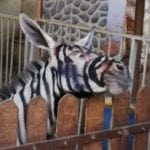Archaeologists and anthropologists have had a busy week. They talked about old reptiles and even older footprints as well as the mysterious moai of Easter Island. Meanwhile, astronomers were given a good scare when they found an asteroid speeding toward Earth. Did it crash into our planet and end all life as we know it? Read on to find out.
10 Falling Poo Over Canada
The city of Kelowna in British Columbia has an unusual problem on its hands—poo is raining from the skies. This all started on May 9. Local resident Susan Allen and her son were stopped at a red light when a brown, smelly liquid started falling onto their car. Unfortunately for them, they had the sunroof open, and both mother and son were pelted with the foul fluid. They made an emergency stop at the nearest car wash to hose themselves off. Allen waited for weeks before coming forward, as she was embarrassed by the incident. Eventually, she decided to share her story after becoming convinced that authorities were giving her the runaround. Kelowna Airport officials said they received and reviewed a complaint but that there was no aircraft in the vicinity at the time of the incident. Allen disagrees, saying she saw an airplane flying over shortly before the feces started falling. Since then, several other people have come forward with similar experiences, and Transport Canada has launched an official investigation.[1] Some experts believe this is the result of the phenomenon known as “blue ice.” It happens when sewage or other liquids leak and freeze on the outside of the plane mid-flight at high altitudes. As the aircraft descends, and temperatures get warmer, the blue ice melts and falls off.
9 The Mother Of All Lizards Found In The Alps
In the recent Nature journal, scientists present the fossils of an antediluvian reptile described as the “mother of all lizards.” Named Megachirella wachtleri, the creature is 240 million years old. That’s 75 million years more than the fossils previously ascribed to the oldest lizard ever found. The remains were actually discovered in the Italian Alps two decades ago by amateur fossil hunters and were first described back in 2003. Only now, high-resolution micro CT scans were able to positively confirm that M. wachtleri belongs to Squamata, the largest order of extant land vertebrates, which includes all lizards, snakes, and worm lizards. The age of the find wasn’t a huge surprise. The genetic evidence already suggested that squamates appeared around 250 million years ago. The fossil record, however, didn’t back up this assertion until this latest discovery. Paper coauthor Michael Caldwell called the fossil a “Rosetta Stone” when it comes to decoding the evolution of the reptile family tree.[2]
8 Killer On The Dance Floor
An FBI agent wanted to show off his killer dance moves during a party at a bar in Denver. He might have gone a little too far when he accidentally shot one of the patrons in the leg after dropping his firearm. The off-duty agent was strutting his stuff in front of an audience when he decided to cap off his dance routine with a backflip. That is when his gun flew out of its holster and landed on the floor. The firearm didn’t actually discharge, but when the agent rushed to grab it, he accidentally pulled the trigger.[3] The whole thing was caught on video. The victim was hit in the lower leg but is expected to make a full recovery. Denver police questioned the FBI agent before releasing him to a supervisor. As of now, the agent is still unidentified, as he hasn’t been arrested yet. Authorities want to determine if he was intoxicated at the time, which might determine if he faces criminal charges or not.
7 What Is The Most Disgusting Thing In The World?
Nobody likes feeling disgusted, but it serves an important evolutionary purpose—it helps us avoid potential disease. According to the parasite-stress theory, our encounters with parasites and diseases over thousands of years played a crucial role in determining the things we find disgusting today and, consequently, would try to keep at arm’s length. A study by the London School of Hygiene & Tropical Medicine (LSHTM) put the theory to the test. It determined the things we find most disgusting in the world and saw if there is actually any correlation with disease avoidance. Researchers surveyed over 2,500 people and presented them with 74 disgusting scenarios, such as seeing a floater in the toilet or watching a man scratch his crotch on the train. Participants rated each one on a scale of disgust. According to the study, the thing people find most revolting is infected wounds producing pus.[4] The disgusting scenarios could be grouped into six domains: rotting food, lesions, animal vectors, risky sex practices, atypical appearance, and poor hygiene. All of them could be linked to possible infections. Researchers see this as a pathogen detection system which we evolved through behavioral responses to avoid harmful organisms we can’t see directly.
6 Picasso Painting Reveals Hidden Painting
Researchers used infrared imaging technology to reveal the layers hidden underneath a Picasso painting and were surprised by what they found—a page from a newspaper and a never-before-seen picture by the Spanish master. The artist completed the work Mother and Child by the Sea sometime in 1902. It is currently on display at the Pola Museum of Art in Hakone, Kanagawa Prefecture, Japan. A team led by John Delaney from the National Gallery of Art in Washington digitally peeled back the layers and found clear images of an underlying painting depicting a woman sitting next to a glass of absinthe with a spoon in it.[5] In and of itself, this isn’t particularly surprising, as Picasso was known to reuse canvasses. More mysterious was the presence of a paper from the January 18, 1902, edition of the French publication Le Journal. It is possible the artist used it to cover up other layers, meaning there could be even more images hiding underneath. Art historians are particularly interested in the discovery because of its proximity to Picasso’s relocation from Paris to Barcelona. It is thought that the painter moved in early January, although the date of the newspaper seemingly contradicts this.
5 Asteroid Reaches Earth
Early Saturday morning, astronomers at the Catalina Sky Survey in Tucson, Arizona, made a startling discovery—an asteroid was on a collision course with Earth. There were only a few hours left before the space rock, traveling at a staggering 17 kilometers per second (10 mps) impacted our planet. Would this be the end of the world? Spoiler alert: It wasn’t. Luckily for us, the asteroid dubbed 2018 LA was only 2 meters (6.6 ft) across. It entered Earth’s atmosphere above the African country of Botswana and turned into a giant fireball that burned itself completely out before touching the ground. If anything, it provided us with a cool light show that was captured on video and made its way online. Paul Chodas, manager of the Center for Near-Earth Object Studies (CNEOS) at NASA’s Jet Propulsion Laboratory (JPL), said this was only the third time that we discovered an asteroid on an impact trajectory with Earth and just the second occasion where we predicted impact ahead of time.[6]
4 How To Wear A 13-Ton Hat
The moai statues on Easter Island are iconic but shrouded in mystery. Hundreds were built between the 13th and 15th centuries, but most of the information behind their origins, their construction, and their purpose was lost. Some of the statues feature hat-like structures called pukao. They are made from volcanic rock called scoria and weigh around 13 tons each. Like the moai themselves, the pukao raised a number of questions: What do they symbolize? Why are they different shapes? Are they hats or hair in a topknot? Why do only fewer than 100 moai have them? Scientists believe they might have elucidated one enigma surrounding the pukao—how they got there. Long ago, archaeologists figured out from wear marks on the sides that the rock cylinders were transported from quarries by rolling them. But how were they lifted on top of statues that can be up to 10 meters (33 ft) tall? Anthropologist Sean Hixon from The Pennsylvania State University believes he has the answer, which is backed by archaeological evidence. Despite their different shapes, all pukao have an indentation at the bottom which matches the statues’ heads. This means they couldn’t have been slid into place but rather levered upward and tilted down onto the moai.[7] Researchers point to rounded stones spread out in front of some statues, which they claim are remains of stone-and-soil ramps used to roll the hats. With the right calculations, this method would only require a team of 15 people to set the pukao in place.
3 The Pickle Lawsuit
What is a pickle? Is it simply a synonym for pickled cucumbers, or is it any kind of vegetable that has been preserved in brine or vinegar? That is the current conundrum behind a lawsuit in Texas. Farming couple Anita and Jim McHaney are suing the Department of State Health Services to change the definition of “pickle.” The McHaneys made a living by selling their produce at their local farmers’ market. A key part of their income involved pickling the leftovers, which, in their case, usually included beets and okra. However, they realized they were breaking the Cottage Food Law enforced in Texas. The law exempts certain types of home food production from meeting the requirements of a food service establishment. This allows small-town farmers to sell their produce without having to adhere to commercial regulations. The law was updated in 2013 and includes a long list of food items, including pickles. The only problem is that it defines pickles only as cucumbers. Anybody who sells other kinds of pickled vegetables under the same guidelines could face fines up to $25,000.[8] A law firm took on the McHaneys’ case pro bono and is fighting the state to update their definition of “pickle” to be more inclusive.
2 Achilles Predicts The World Cup
The World Cup is nearly upon us, and some fans simply cannot wait until the finals to find out who will take home the trophy. Luckily for them, Achilles is here to predict the results. Achilles is a deaf white cat living at the Hermitage Museum in St. Petersburg. He earned the position of World Cup clairvoyant after his success at last year’s Confederations Cup, where he got three out of four predictions right.[9] In his defense, Achilles couldn’t have correctly divined the fourth match, as it ended in a draw, whereas he only had the option of picking a definitive winner by eating from a bowl marked with the country’s flag. It remains to be seen if Achilles can live up to the reputation of his predecessor, Paul the octopus. He made predictions for the 2010 World Cup and ended with an impressive 85.7-percent success rate.
1 Scientists Discover Oldest Footprints Ever
A team of Chinese paleontologists exploring the Three Gorges along the Yangtze River claim to have discovered the oldest footprints ever found. The tracks are preserved in limestone which is between 551 and 541 million years old, belonging to the late Ediacaran Period. The identity of the creature that made them is a mystery, although scientists believe it was bilaterian, meaning it had paired appendages.[10] An ancient ancestor of arthropods or annelids seems probable. The footprints are approximately 1 to 2 millimeters in size and 4 millimeters apart. However, since we can’t say how many pairs of legs the animal that made them had, the measurements cannot be used to estimate the size of the creature. The tracks seem to be connected to several burrows. While paleontologists believe they were made by the same creature, they also noted a small offset at the junction between the footprints and burrows, making it difficult to say with certainty. If the same animal is responsible for both, then its burrowing behavior could tentatively identify it as part of a previously discovered ichnogenus called Lamonte trevallis.

